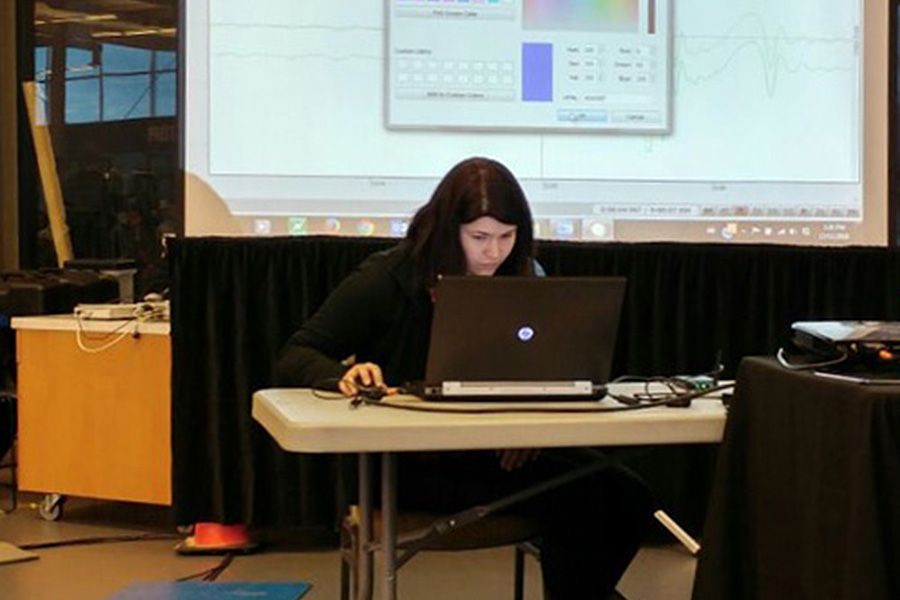Education and Innovation at CSI Calgary

The CSI Calgary continually strives to advance the growth and development of the next generation of sport scientists in Canada. To that end, sport science students from around the world have sought out practicum opportunities at the CSI Calgary to expand their experience and skills. They come to learn from, and contribute to, the ongoing research and innovation happening at the CSI Calgary, which serves to support the performance of Canadian athletes.
One such student is Alanna Weisberg, who is one semester away from completing her bachelor’s degree from Syracuse University, majoring in biology and exercise physiology. Although she is studying in the United States, she is quick to point out that she is Canadian through and through.
Her motivation to work as a practicum student at the CSI Calgary was both personal and patriotic. “I wanted to use the skills I’ve learned at school to benefit my own personal growth but also that of sport in my home country,” she says.
Working closely with Pro Stergiou, CSI Calgary Director of Biomechanics and Performance Analysis, Weisberg took on many roles at the CSI Calgary during her eight-month practicum. She worked primarily on one research project with freestyle skiing supported by Own the Podium.
The study was to evaluate and implement a new technology that will help freestyle skiers in the halfpipe better understand and measure one aspect of the quality of their jumps - height. “It’s important to know how high a skier is getting out of the pipe, as this is a major criterion of the sport,” explains Stergiou. “This research is providing the skiers with a tool to objectively evaluate their tricks and jumps.”
Weisberg worked to validate the technology and collect data in the lab. However, it’s not just the technical skills and knowledge that students like Weisberg are looking to gain. “What I learned the most is the ability to adapt to anything that happens,” she says. “I’ve learned how to communicate better, work more independently, problem solve, properly document the research and most importantly how to answer the question, “Why does it work?”
These skills will help Weisberg be a better student as she enters the final semester of her undergraduate degree, but what she is most excited about is returning to Calgary in July to begin her graduate degree in Kinesiology. She credits her practicum experience at the CSI Calgary with providing the clarity and focus she was missing to truly know what she wants to do in the field of sport science.
The integration of sport, research and innovation at the CSI Calgary left a strong impression on Weisberg and she marvels at the breadth of experiences she had throughout her practicum beyond the academic realm. “One day I had a computer problem and an athlete from the men’s bobsleigh team happened to be there and offered to help. Then Erica Wiebe showed up one day and asked if I wanted to see her Olympic gold medal. Where else does all this happen?!” she laughs.
For Stergiou, what the practicums achieve is high quality students doing excellent work that is mutually beneficial to the student and the CSI Calgary, which fits seamlessly with the broader goal of sharing and transferring knowledge. “We are educators. For us to be able to teach and foster a new of crop of sport scientists is inherent in us,” he says, adding, “It’s incredible that they reach out to us from around the world – you know that they are motivated to be here and work hard.”
Research and Innovation is one of the CSI Calgary pillars. Local, national and international students enhance the development of new knowledge and it’s potential transfer to sport.
Canadian Sport Institute Calgary: @csicalgary
Written by Kristina Groves: @kngrover
11/01/17
